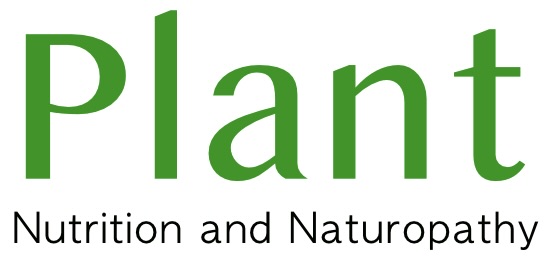The Importance of Fibre and Protein

Perimenopause is the stage leading up to menopause, where women experience significant hormonal fluctuations. This transition typically occurs in a woman’s late 40s to early 50s and can last several years, but can start in her 30s. During this time, women often experience symptoms such as hot flashes, night sweats, mood swings, weight gain, sleep disturbances, and changes in menstrual cycles. While hormone therapy is an option for some, many women are turning to lifestyle changes, particularly diet, to ease their symptoms.
A whole food plant based (WFPB) diet, rich in natural, minimally processed foods like fruits, vegetables, whole grains, legumes, nuts, and seeds, can provide numerous benefits during perimenopause. This diet offers a wealth of nutrients, antioxidants, and fibre that may help alleviate many of the common discomforts associated with this transitional phase. Specifically, fibre and protein are essential for managing blood sugar levels, weight, and hormonal balance, all of which are crucial during perimenopause.
What Is a Whole Food Plant Based Diet?
A WFPB diet consists primarily of plant based foods that are as close to their natural form as possible. It excludes most processed foods, refined grains, and animal products. Key components of this diet include:
Fruits and vegetables (rich in vitamins, minerals, and antioxidants)
Whole grains (brown rice, quinoa, oats, barley)
Legumes (lentils, chickpeas, black beans)
Nuts and seeds (almonds, walnuts, chia seeds)
Tubers (sweet potatoes, yams)
The Role of Fibre During Perimenopause
Fibre plays a crucial role in supporting hormonal balance and digestive health, both of which are impacted during perimenopause. Here’s how fibre helps:
1. Hormonal Regulation
As oestrogen levels begin to fluctuate and decline during perimenopause, fibre can help regulate these hormonal shifts. High fibre foods, especially those rich in soluble fibre, bind to excess hormones like oestrogen and help the body excrete them through the digestive system. This may help reduce oestrogen dominance, which is associated with symptoms like heavy bleeding, bloating, and breast tenderness (Hughes et al., 2011).
Additionally, fibre-rich foods like flaxseeds contain phytoestrogens, plant compounds that mimic oestrogen and may help balance hormone levels naturally (Miller et al., 2007).

2. Weight Management
Weight gain is a common concern during perimenopause due to hormonal changes, slower metabolism, and changes in fat distribution. Fibre is crucial for weight management because it promotes feelings of fullness, which can reduce overeating and cravings. High fibre foods are low in calories but dense in nutrients, making them ideal for satisfying meals that support healthy weight loss or maintenance. Legumes, such as beans and lentils, are particularly effective in promoting satiety due to their high fibre content (Slavin, 2013).
3. Blood Sugar Control
Fluctuating blood sugar levels are a common issue during perimenopause, leading to symptoms like irritability, fatigue, and cravings for sugary foods. Fibre helps to slow the absorption of sugar into the bloodstream, preventing rapid blood sugar spikes and crashes. Foods like whole grains and vegetables are excellent sources of fibre and may help regulate blood sugar levels, potentially reducing the risk of type 2 diabetes (Evert et al., 2017).
4. Digestive Health
As we age, digestion tends to slow down, leading to issues like constipation. Fibre is key for promoting regular bowel movements and maintaining a healthy gut. It adds bulk to stools, which helps them pass more easily through the intestines. It also supports the growth of beneficial gut bacteria, which is essential for overall digestive health (Slavin, 2013).
The Role of Protein During Perimenopause
Adequate protein intake becomes even more important during perimenopause due to the body’s changing needs. Protein helps preserve muscle mass, regulate blood sugar, and support the body’s metabolic processes. Here’s how protein can support women during this time:
1. Preserving Muscle Mass
One of the challenges of aging is muscle loss, and this process accelerates during perimenopause due to declining oestrogen levels. Protein is essential for maintaining and rebuilding muscle tissue. A higher protein diet may help prevent muscle breakdown and support strength and endurance, which is especially important for women who may become less active during this phase (Bauer et al., 2013).
Plant based sources of protein such as tofu, tempeh, lentils, chickpeas, and edamame can be a great addition to the diet to help meet protein needs.
2. Blood Sugar Regulation
Protein plays a crucial role in stabilising blood sugar levels by slowing the absorption of carbohydrates. Including protein with each meal helps prevent blood sugar spikes and provides sustained energy, which is particularly important for women in perimenopause who may experience blood sugar fluctuations due to hormonal changes (Micha et al., 2017).
3. Mood and Mental Health
Perimenopause can bring about mood swings, anxiety, and depression. Protein rich foods contain amino acids, which are essential for the production of neurotransmitters like serotonin and dopamine. These chemicals play a key role in regulating mood and mental wellbeing. By including adequate protein in the diet, women can support better mood stability and mental clarity during perimenopause (Hibbeln et al., 2006).

How to Incorporate More Fibre and Protein into Your WFPB Diet
Here are some simple ways to boost your fibre and protein intake on a whole food plant based diet:
Start with legumes: Include beans, lentils, and chickpeas in soups, salads, and stews.
Snack on nuts and seeds: Almonds, chia seeds, flaxseeds, and sunflower seeds.
Embrace whole grains: Swap refined grains for whole grains like quinoa, brown rice, and oats to increase your fibre intake.
Try plant based protein sources: Incorporate tofu, tempeh, and edamame, which are great sources of plant based protein.
Fill half your plate with vegetables: Vegetables like broccoli, spinach, and sweet potatoes are high in fibre and provide essential nutrients.
Drink smoothies: Blend leafy greens, fruits, seeds, and plant based protein powder to make a fibre- and protein-packed meal or snack.
A whole food plant based diet offers numerous benefits during perimenopause, especially when it comes to supporting fibre and protein intake. Fibre helps with hormonal balance, weight management, blood sugar control, and digestive health, while protein supports muscle maintenance, blood sugar regulation, and mood stability. By focusing on nutrient dense, whole plant foods, women can improve their overall health and ease many of the symptoms associated with perimenopause.
Before making dietary changes, it’s always a good idea to consult with a healthcare professional or registered clinical nutritionist to ensure your dietary plan meets your individual needs.
References:
Bauer, J. M., et al. (2013). Protein and muscle mass: A review of the role of dietary protein in the maintenance of muscle mass during aging. The Journal of Nutrition, 143(6), 1167-1172. https://doi.org/10.3945/jn.113.182079
Evert, A. B., et al. (2017). Nutrition therapy for adults with diabetes or prediabetes: A consensus report. Diabetes Care, 40(10), 1325-1342. https://doi.org/10.2337/dci17-0036
Hibbeln, J. R., et al. (2006). Dietary intake of omega-3 and omega-6 fatty acids and the risk of depression. Journal of Clinical Psychiatry, 67(9), 1341-1347. https://doi.org/10.4088/JCP.v67n0910
Hughes, M. C., et al. (2011). Dietary fiber, phytoestrogens, and menopause. Menopause, 18(5), 520-528. https://doi.org/10.1097/gme.0b013e3181fe1b5a
Micha, R., et al. (2017). Dietary habits and the risk of cognitive decline and dementia: A systematic review. Journal of Alzheimer’s Disease, 55(2), 399-411. https://doi.org/10.3233/JAD-160759
Miller, G. D., et al. (2007). Flaxseed and health: Mechanisms of action in the treatment of menopausal symptoms. Journal of Nutrition, 137(3), 760-764. https://doi.org/10.1093/jn/137.3.760
Slavin, J. L. (2013). Dietary fiber and body weight: The influence of fiber on body weight and fat mass. The Journal of Nutrition, 143(5), 761S-765S. https://doi.org/10.3945/jn.113.181703
